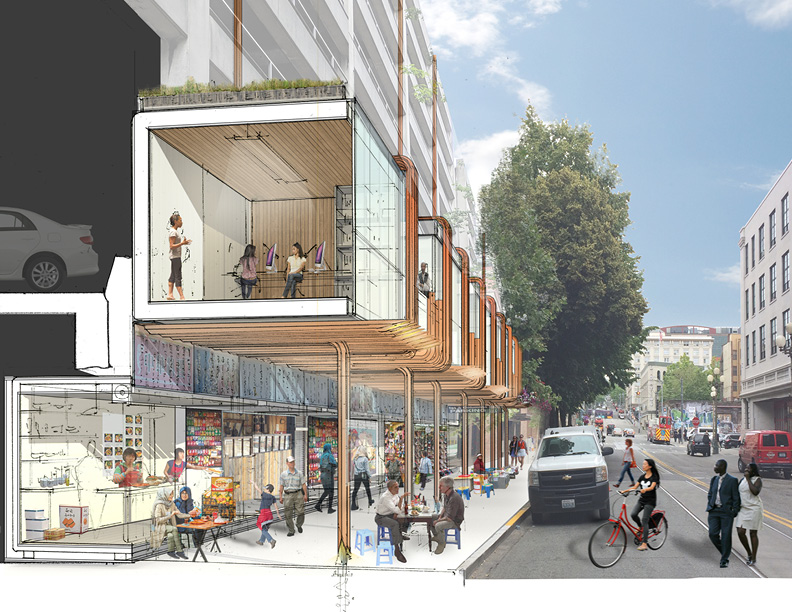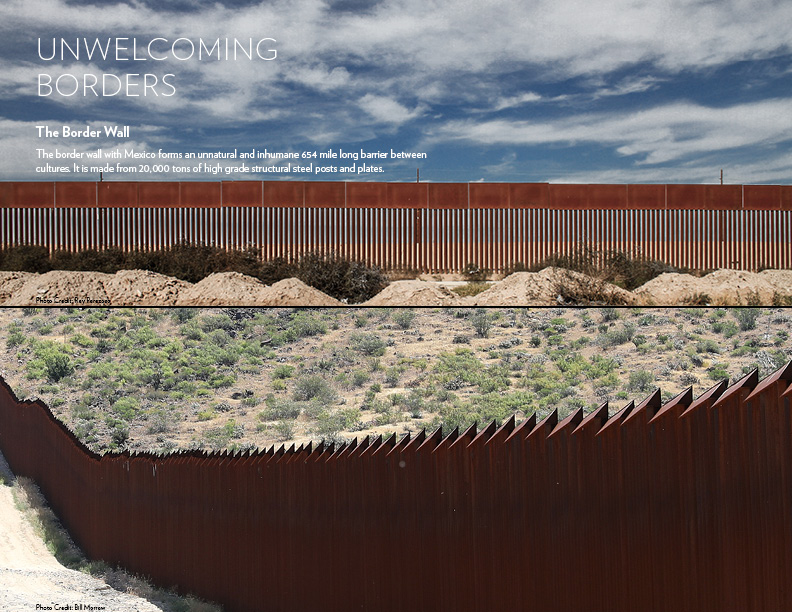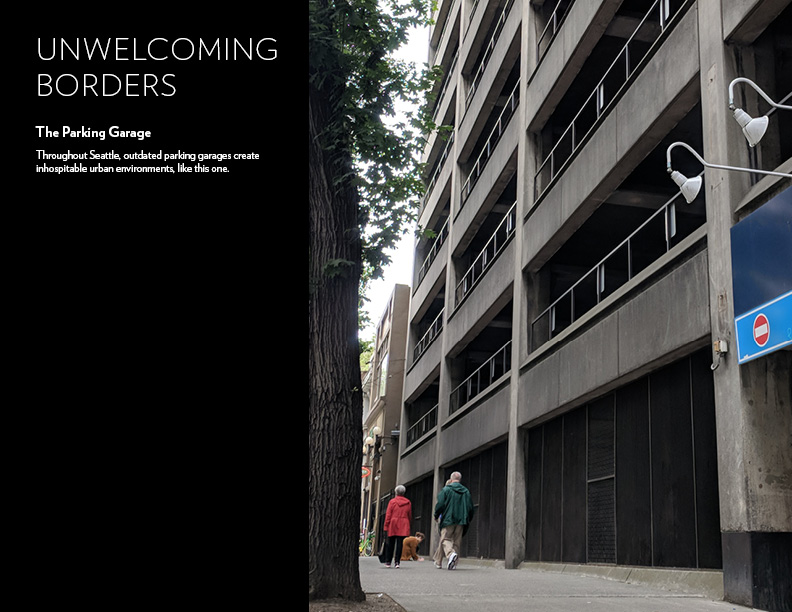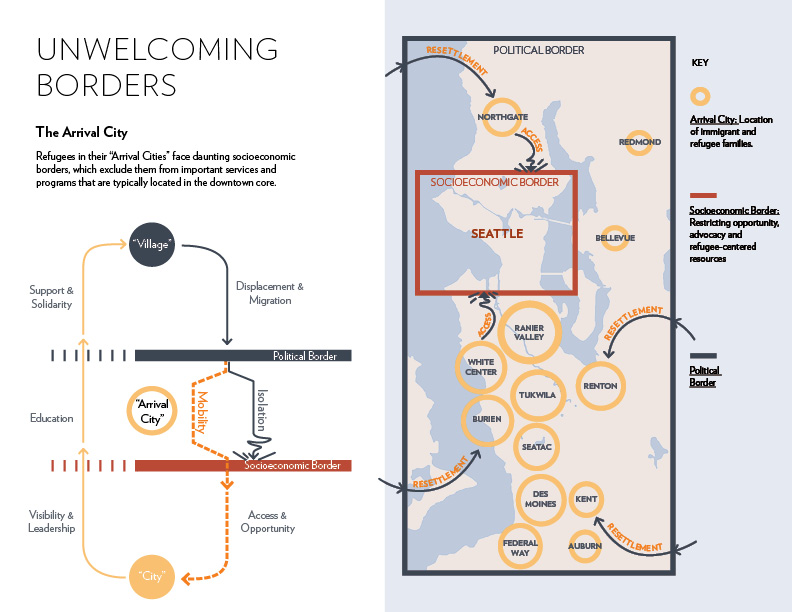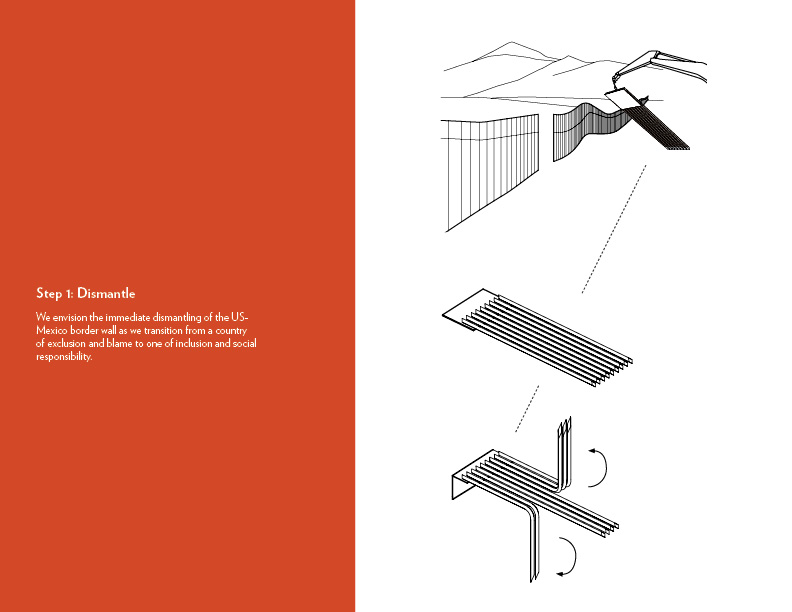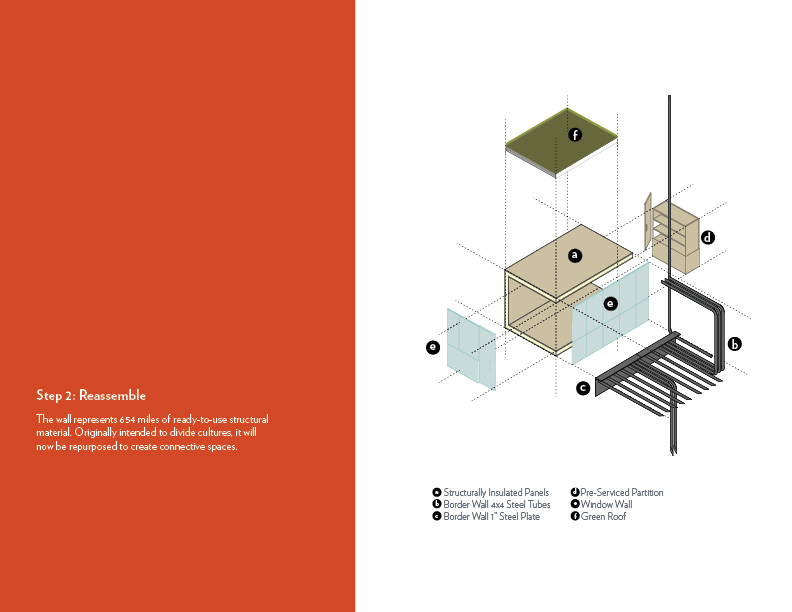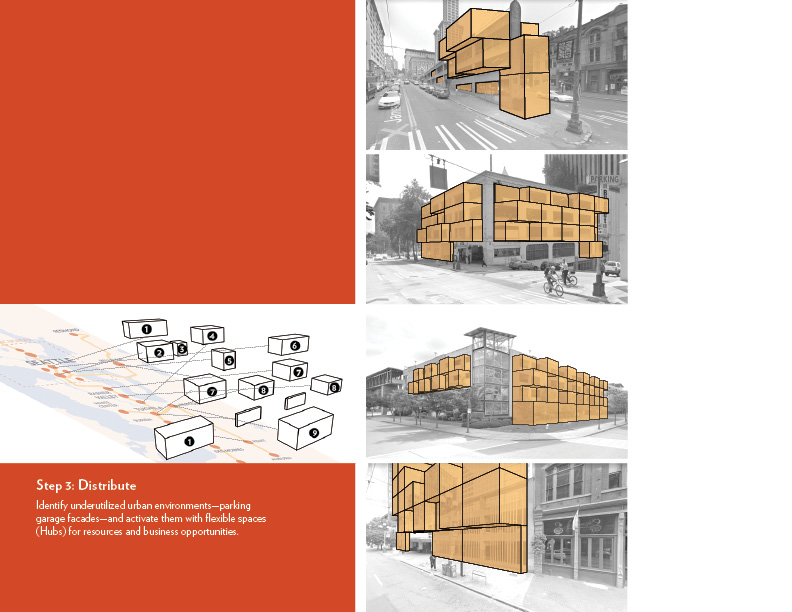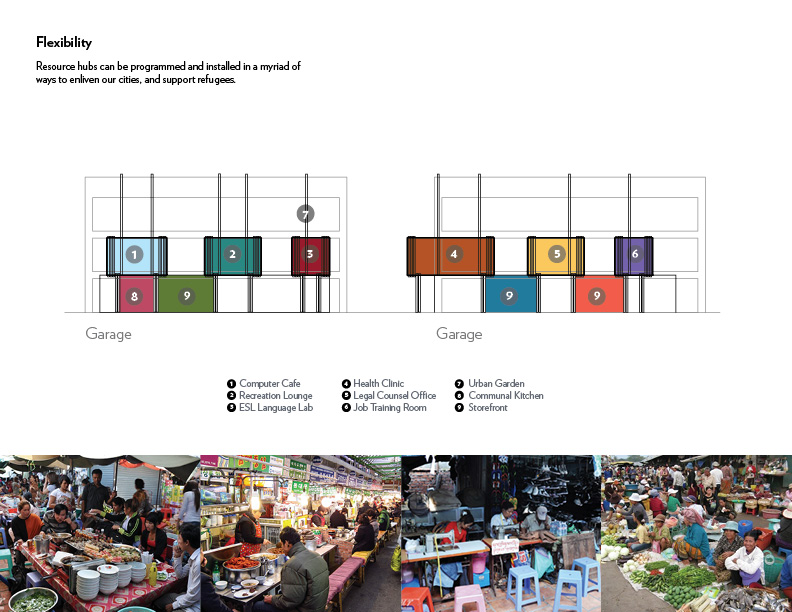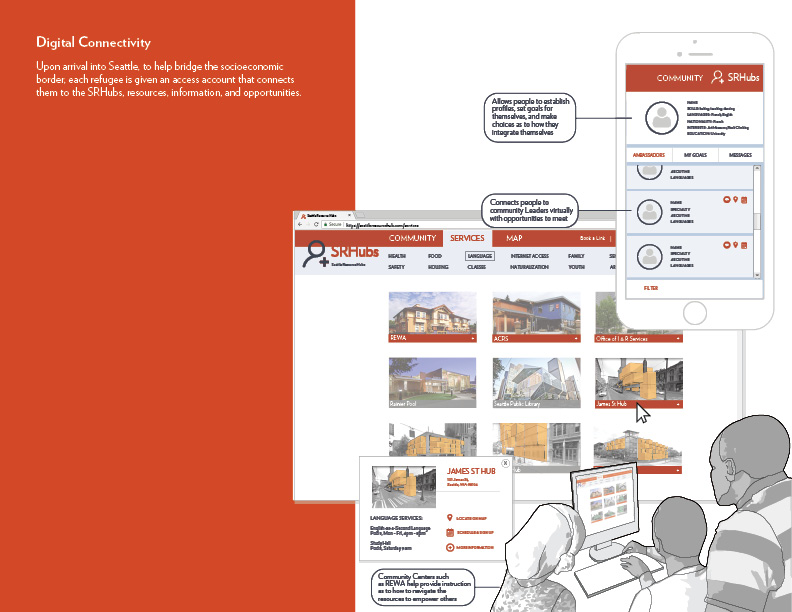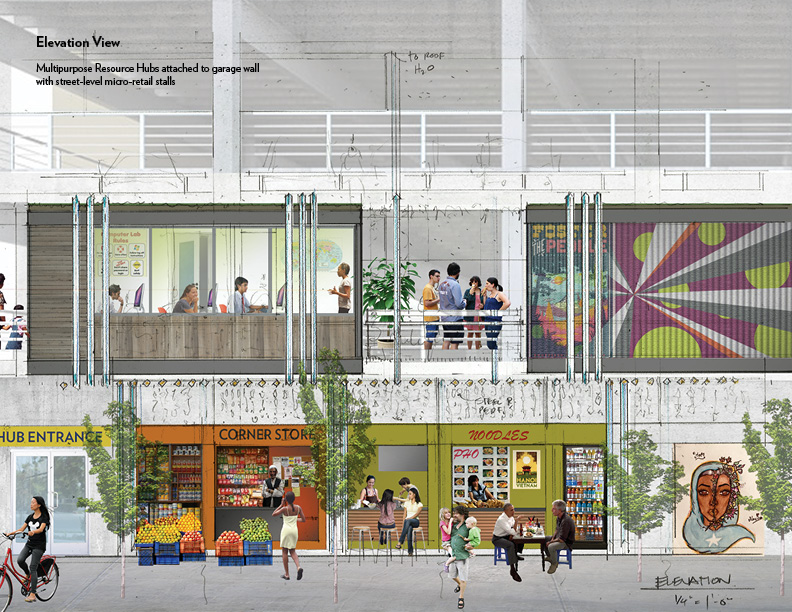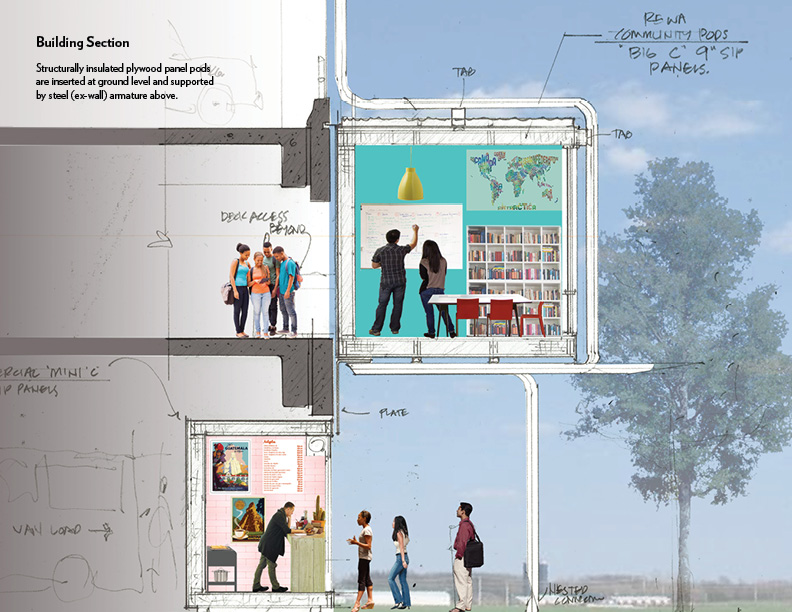Seattle Resource Hubs
What does a Sanctuary City look like?
“Seattle Resource Hubs” is a vision to dismantle the US-Mexico border wall and repurpose it for good as refugee and immigrant community centers that revitalize inactive urban parking garages.
This proposal, which was originally entered in the “Displaced: Design for Inclusive Cities” competition, sought to answer the question “what does a Sanctuary City look like?” Partnering with ReWA’s youth program (Refugee Women’s Alliance), we focused on accessibility, visibility, and connectivity in response to the urban/suburban disparity between white Americans and communities of color.
Background
Our starting point was Journalist Doug Sanders’ idea of Arrival City, a concept describing networks surrounding urban immigrant and refugee life. Families, community members, advocates and businesses support each other with advice, opportunities, education to navigate a new country. The goal is that the connections generated through these networks is shared forward in to the new City, and back to the home Village, creating a feedback loop of cultural exchange and social mobility.
Unwelcoming Borders
With the ultimate goal of breaking down socioeconomic barriers for refugee and immigrant communities, our proposal takes on three unwelcoming borders:
The Border Wall – An immense amount of money and materials is wasted on a structure that fuels national hostility and divides cultures. We propose tearing it down and reusing its parts to create community.
The Parking Garage – dead street fronts create inhospitable urban environments. We propose enlivening them by adding a layer of activity.
The Arrival City – political and socioeconomic borders create social isolation for arriving refugees, limiting interconnection and access to the full resources and opportunities Seattle provides. We propose creating flexible resource hubs and a digital support platform to navigate them.
Our Seattle Resource Hubs (SRHubs) proposal provides a unified solution to these three issues.
Creating physical spaces for face-to-face interactions
The SRHubs are physical spaces where refugees can have access to government agencies, healthcare, education, recreation, and legal aid, that may otherwise be difficult to navigate for refugee communities with limited English skills or computer literacy. The hubs themselves are designed for flexible use; uses may include small businesses, community gathering, social/health services, classes, etc. By attaching hubs to street facades of existing structures, we also create visibility – an enlivened pedestrian experience with storefront activity and art.
Providing regional accessibility to resources
Access barriers arise as Seattle grows, gentrifies, and becomes more expensive. Arrival Cities are pushed further from the core, into suburbs and smaller jurisdictions where resources and opportunities are underdeveloped and fewer. By attaching to parking garages and transit stations, the hubs harness the existing regional transit network to provide connections, serving refugee and immigrant communities beyond the borders of Seattle.
Our hope is that by connecting refugee and immigrant communities to resources and opportunities in visible urban spaces, not only will they more easily access the tools they need to thrive and prosper, but they will be better integrated into the existing urban community. With increased visibility and integration, socioeconomic barriers will be more quickly dismantled, leading towards mutual support among all who call Seattle home.
Status Conceptual Proposal


